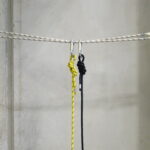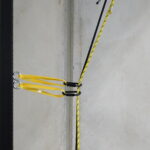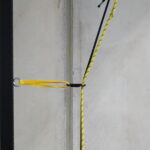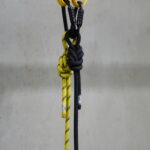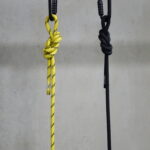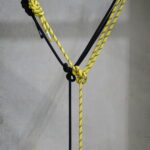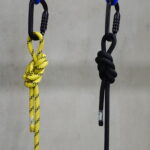What is the Rope Access Method?
The Rope Access Method is a complete working at height access, movement and rescue system where certified users are suspended from ropes and other elements allowing movement in all directions to aid the completion of trade and task at height.
Rope access is a relatively new industry initially developed offshore where it adapted and co-opted many Caving, Climbing and Alpine rope systems and techniques. It is now found and applied in all Industrial, Commercial and Construction industries and is recognized as a safe and appropriate method of protection when working at height across many countries and their safety regulations.
The core safety value within rope access is always having two points of connection. The intent is to always back up and protect against misuse, malfunction or failure of the main support system.
The primary purpose of rope access is to enable workers to access difficult-to-reach locations without scaffolding, boom/platform lifts, or suspended platforms.
A rope access technician will use ropes to descend, ascend and move laterally traversing both ropes and structures. Technicians are suspended in a harness and at all times have a secondary point as a means of backup and redundancy.
Rescue and safety are at the center of the Rope Access Method, All rope access technicians are required to train and perform rescue as part of their assessment criteria. Level 3 technicians can rig any system required with rescue in mind, and subsequently can perform all system operations and manoeuvre to complete a rescue.
Certification comes through a minimum of four days of training and one full day of externally administered assessment, on all practical manoeuvres, theory knowledge, system setup and mock rescues.
Working at Height Methods
Within working at height there are many techniques for access and safety, with an inherent level of risk associated. Rope Access comes under the Work-Positioning category but has much higher levels of safety and added rescue response than any other active fall protection technique.
| Hierarchy | Type | Function | Common Systems |
| Lower Risk Score | Passive Fall protection | A system that needs no training | Guard Rails, Netting, Scaffold |
|---|---|---|---|
| Fall Restraint | prevent you from travelling to the edge of a structure or work position from which you could fall | Fixed-length lanyards, Horizontal lifelines, Rail systems | |
| Work-positioning (Rope Access) | On system supporting or suspending the worker with a secondary system attached in case of a fall | Pole Strap, Rope Access Systems, Grillon | |
| Higher Risk Score | Fall Arrest | Allows the user to fall but limits the impact force experienced to 600 kgf | “Y-Lanyard”, Self-retracting Lifeline, Shock-Pack |
For More Information on The Rope Access system: Rope Access Advantage
For projects that have used rope access: Projects

